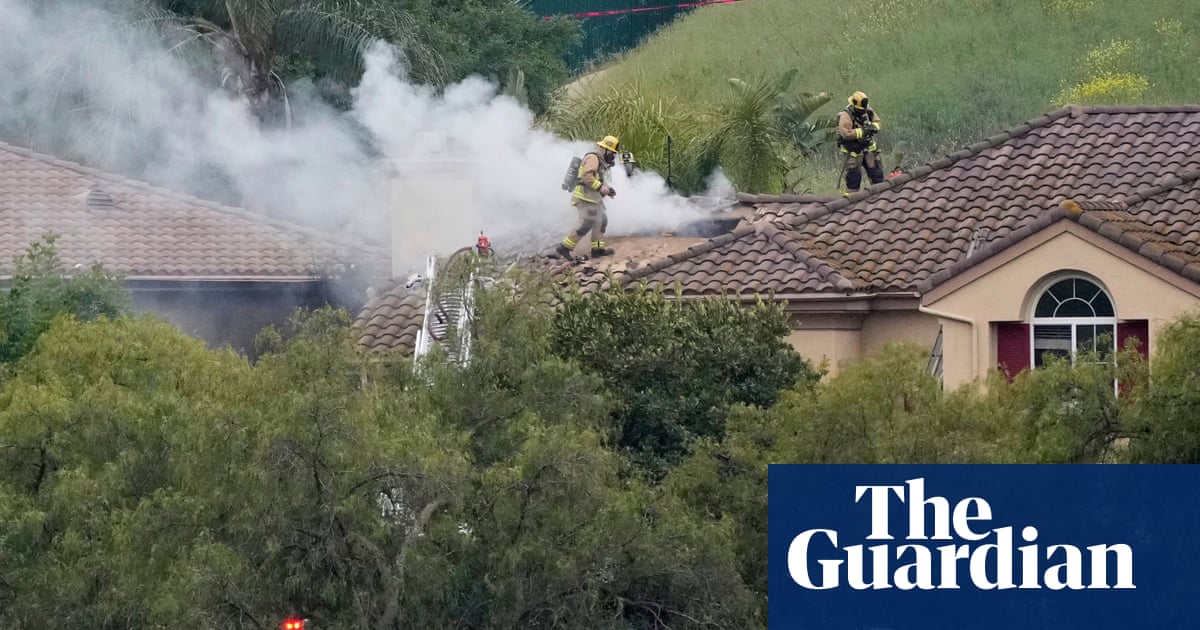The crash of a small aircraft in Simi Valley, resulting in the loss of two lives and a dog, raises several concerns regarding aviation safety and the impact of such incidents on the community. This incident not only highlights tragic personal loss but also invites scrutiny regarding the broader implications of aviation regulations and emergency response protocols.
Public Safety Concerns
The article conveys a sense of urgency and concern for public safety by detailing the immediate response from fire crews and police. The evacuation of residents and the visual of smoke from one of the damaged homes create a dramatic narrative. This portrayal may aim to heighten awareness about the risks associated with small aircraft operations, particularly in residential areas. While the piece does not directly address the frequency of such incidents, it implicitly encourages a discussion about the safety measures that should be in place to protect communities.
Potential Hidden Agendas
The absence of detailed information about the occupants of the crashed plane may suggest an intention to focus on the incident's immediate consequences rather than the backgrounds of those involved. This lack of information could indicate a desire to avoid sensationalism surrounding the identities of the victims, thereby maintaining a respectful tone. However, it might also lead to speculation about the reasons behind the crash, encouraging a narrative that could point to systemic issues within aviation safety.
Comparative Analysis with Other Incidents
Reference to a previous crash involving a similar aircraft model (the Van’s RV-10) serves to contextualize the current incident within a pattern of safety concerns related to small aircraft. Drawing parallels between the two incidents may suggest a systemic issue within the design or operational protocols of such aircraft. This comparison might provoke discussions about the need for stricter regulations or better training for pilots, especially as the previous crash resulted in multiple casualties.
Impact on Community and Economy
The direct impact on the Simi Valley community includes not only the tragic loss of life but also the physical damage to homes, which could lead to economic repercussions for the affected families and the neighborhood. The potential for increased insurance premiums or property values declining in the aftermath of such an incident could further stress the local economy. Additionally, if the crash raises broader questions about aviation safety, it might lead to increased scrutiny of aircraft manufacturing companies and regulatory bodies, potentially influencing local job markets tied to these sectors.
Audience Reception
The news story is likely to resonate with individuals concerned about aviation safety, local residents, and families affected by air traffic in urban areas. The emotional weight of the narrative is tailored to evoke sympathy and concern, appealing to those who prioritize safety and community well-being.
Market Implications
While this specific incident might not directly influence stock markets, it could have implications for companies involved in aviation manufacturing and safety. If the investigation leads to calls for regulatory changes, firms within the aviation sector could experience market fluctuations based on investor sentiment toward perceived risks associated with small aircraft operations.
Geopolitical Context
Though this incident is localized, it reflects broader discussions about air safety and regulation, which can have international implications. As air travel becomes increasingly globalized, incidents like this can contribute to a growing discourse on international aviation standards and safety measures.
Artificial Intelligence Influence
It is possible that AI tools were utilized in drafting this news piece, especially in structuring the narrative and ensuring clarity in reporting facts. AI models could assist in analyzing data from previous incidents to provide context. However, the emotional tone and ethical considerations in reporting likely necessitate human oversight to navigate the sensitivities involved.
As a whole, the article serves to inform the public of a tragic event while subtly prompting discussions about safety and regulation in aviation. The information presented appears credible, yet the motivations behind its framing could be interpreted in various ways, depending on the reader's perspective on aviation safety and public policy.
